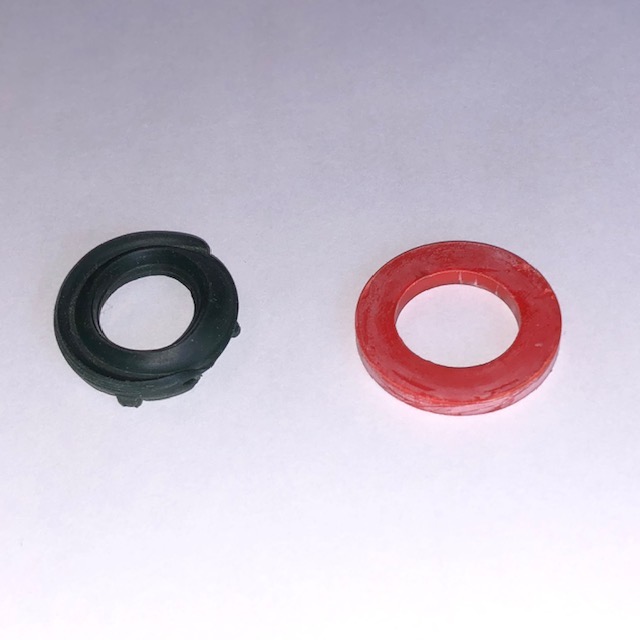“Great things are done by a series of small things brought together.”
–Vincent Van Gogh
Our 10-year-old washing machine died last week. One benefit is that we got to support our local economy during these slower economic times.
The good news is that appliances with higher efficiency and better sound insulation are on sale these days. The better news is that the nice shipping people from Jays Moving carried the 200-pound washing machine up the stairs so we could install it in the laundry closet.
My wife and I are both pretty handy with tools and construction. In fact, my wife installed the hardwood floors and built the fence in our last house. We thought we could handle connecting a couple of hoses to get the washer up and running, right!?
Side note: the best gift I ever bought my wife was an air compressor! Now, back to my story…
The first mistake was doing this project late in the evening when we were tired and just wanted to get it done so we (well, not we, but someone) could start working on the laundry pile.
Since the hoses were in good shape, I thought we could just insert new washers into the old hose connectors. I dug out the solid and thick old rubber washer and put in a new washer. That was my second mistake.
The third mistake was not using the new hoses included with the new washing machine. What were we saving them for?
You know what happened, don’t you? Despite my severely tightening the hose connectors, the new washer failed. It sprung a slow leak that we did not notice for a few days. Our water alarm was not on the floor as it—ironically—was sitting on top of the bag of new hoses. The water sprayed on the wall and eventually seeped through the floor and down into the kitchen pantry one level below. Fortunately, fans and heaters have helped to dry out our water mistakes.

The washer I installed (on the left) failed along one edge and this allowed water to leak slowly. The rubber washer that came with the new hoses and that is now installed in the hose is on the right.
Why did the washer fail? Because I made a poor decision late in the day. Because we didn’t use the new hose included with the washer. Because I used a cheap, plastic washer likely designed for a garden hose.
How many problems in business—and life—are caused by us assuming a minor item or decision is not important? Or because we take a shortcut because we’re tired. Or because we’re resisting something new.
“What small changes can make big differences in your company? Ask your employees…they’ll tell you.”
–Phil Symchych
And now, a word from our sponsor…
To access free articles and information on business growth, supply chain, crisis management, succession planning, and more, go to the free public section on my new Global Business Advisors Forums here.
An Offer!
If you’d like to subscribe to our upcoming monthly newsletter called “The Global SME Business Advisor,” normally at $295 USD value and temporarily offered for free, let me know by email.
Your actions:
- Ask people what tasks or errors they end up fixing every day.
- Analyze routine procedures such as reports or meetings that could be shortened or eliminated entirely.
- Estimate the time spent and cost of rework or waste.
- Identify causes of waste, problems, errors, and rework. This is called “root cause analysis.”
- Develop and implement solutions that reduce errors, save time, and improve quality.
- Measure success and quantify the impact on your top and bottom lines.
- Codify and celebrate your successes.
- Regularly (at least quarterly) review and assess your regular procedures and processes.
Paying attention to small things that waste people’s time can give you capacity to make significant improvements over time.
Let’s do the math…
For example, one client had a regular weekly one-hour meeting with 12 people. 12 people X 49 weeks (52 weeks less three weeks for vacation) X 1 hour = 588 hours of meeting time. If the average wage is $30 per hour, then the annual cost is $17,640 per year. If we can reduce the meeting to half an hour, that would save $8,820 of labor time that could be spent on more productive tasks to generate revenues, reduce costs, or improve efficiency.
If your minimal Return On Labor is 300%, that generates over $26,000 (math: 300/100 x $8,820 = $26,460) of return to your bottom line. Assuming a valuation multiple of 5X, that increases the valuation of your company by $130,000. This is from one-half-hour saving per employee per week in a small team of twelve people.
If you have 100 employee, and you save half hour per week in three different ways, thus saving 1.5 hours per week per employee, you could increase your valuation over $3,000,000.
Small changes, when scaled, add up to big dollars.

